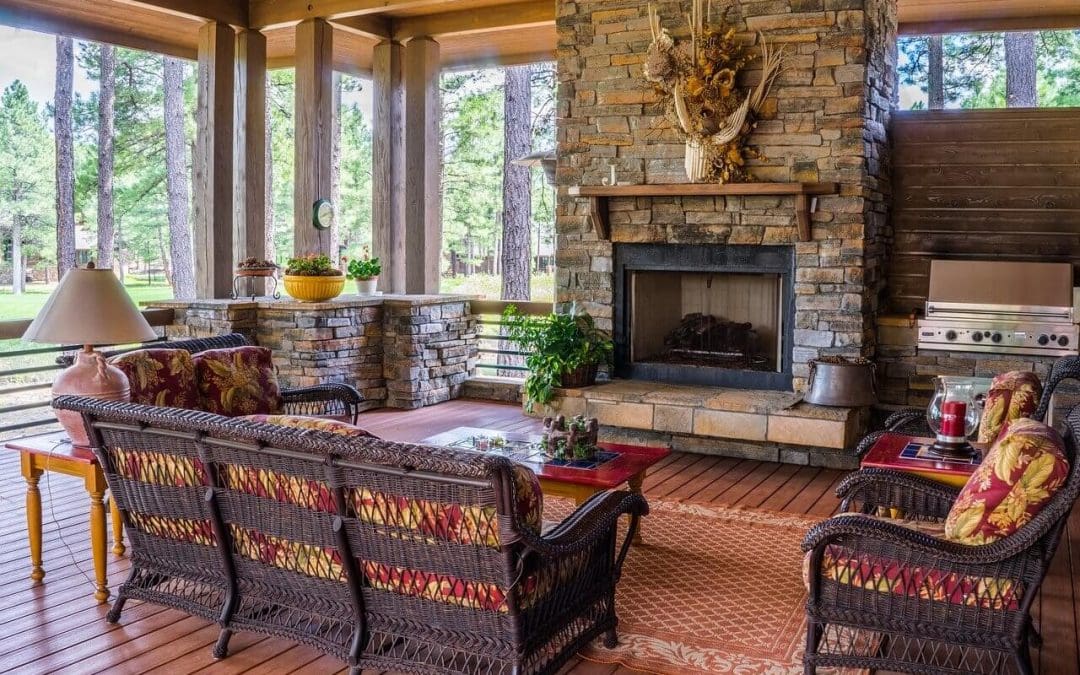A fireplace adds warmth and charm to any home, but it requires regular maintenance to keep it clean, safe, and efficient. Over time, soot, ash, and creosote can build up, leading to potential fire hazards and unpleasant odors. If you want your fireplace to function properly and look great, a thorough cleaning is essential. In this guide, we’ll walk you through how to clean your fireplace step by step, sharing expert tips to make the job easier and more effective.
Gather Your Cleaning Supplies Before You Clean Your Fireplace
Before you start, it’s important to have everything you need on hand. Cleaning a fireplace can be a messy job, so preparation is key. You’ll need a sturdy fireplace shovel, a metal bucket for ash disposal, a stiff-bristled brush, a vacuum with a HEPA filter, warm soapy water, white vinegar or baking soda, gloves, a dust mask, and old towels or newspapers to protect your flooring. If your fireplace has glass doors, a glass cleaner or a homemade vinegar solution will help remove smoke stains.
Remove Ash and Debris
The first step in cleaning your fireplace is to clear out any ash and leftover debris. Make sure the fire has been completely extinguished for at least 24 hours before cleaning. Scoop out the ashes with your shovel and place them in a metal bucket. If you plan to use the ashes in your garden or compost, let them cool for a few more days. Once the majority of the ash is removed, use your vacuum to clean up any remaining fine particles.
Scrub the Interior Walls
The walls of your fireplace can accumulate a thick layer of soot and creosote over time. These substances can be flammable and should be cleaned regularly. Using a stiff-bristled brush, scrub the walls with a mixture of warm water and dish soap. White vinegar or a paste made from baking soda and water can work wonders for stubborn stains. Apply the solution, let it sit for a few minutes, and scrub vigorously. Rinse with a damp cloth and allow the interior to dry completely.
Clean the Fireplace Grate and Doors
If your fireplace has a metal grate, remove it and scrub it well with warm soapy water. If there’s rust buildup, a wire brush or steel wool can help remove it. For glass doors, use a fireplace-safe glass cleaner or a mixture of vinegar and water to wipe away smoke residue. Avoid using ammonia-based cleaners, as they can damage the glass. Let everything dry completely before putting the grate back in place.
Check and Clean the Chimney
A clean chimney is essential for fireplace safety. Over time, creosote builds up inside the chimney, which can cause chimney fires if not properly maintained. While minor cleaning can be done yourself, it’s best to have your chimney inspected and professionally cleaned at least once a year. If you decide to do some chimney cleaning yourself, use a long chimney brush to loosen debris, making sure to wear a dust mask and goggles to protect yourself from falling soot.
Wipe Down the Exterior
The outside of your fireplace deserves attention too. If your fireplace is made of brick, a mixture of warm water and vinegar can help remove stains. For stone fireplaces, a mild detergent is usually best. Use a soft cloth or sponge to wipe down the exterior, and do not use harsh chemicals that could damage the finish. If you have a wooden mantel, dust it regularly and occasionally polish it with a wood-safe cleaner.
Maintain a Regular Cleaning Schedule
A clean fireplace looks great and functions more efficiently. To keep it in top shape, remove ashes after every few uses, give the interior a good scrubbing once a month during peak season, and schedule an annual professional chimney inspection. Taking care of your fireplace regularly will extend its lifespan and make each use safer and more enjoyable.
A well-maintained fireplace enhances the look of your home and ensures your safety and comfort throughout the colder months. With these cleaning tips, you’ll be able to enjoy cozy fires all season long with peace of mind.
FAQs on How to Clean Your Fireplace
How often should I clean my fireplace?
It depends on how often you use it. If you burn wood frequently, you should remove the ashes regularly and clean the interior at least once a month. A professional chimney sweep should inspect and clean your chimney once a year.
Can I use household cleaners to clean my fireplace?
Avoid harsh chemical cleaners, as they can be flammable or leave harmful residues. Stick to warm soapy water, vinegar, or baking soda for safe and effective cleaning.
What is creosote, and why is it dangerous?
Creosote is a highly flammable substance that builds up inside your chimney when wood burns. If too much accumulates, it can ignite and cause a chimney fire. Regular cleaning and professional inspections help prevent dangerous buildup.
Can I vacuum up ashes with my regular household vacuum?
No, household vacuums aren’t designed for fine ash particles and can easily become clogged or release ash into the air. Use a vacuum with a HEPA filter designed for fireplace ash, or sweep up ashes carefully.
How do I remove soot stains from brick?
A paste of baking soda and water works well on brick. Apply it to the stain, let it sit for about 10 minutes, then scrub with a brush and rinse with water.
Imperial Inspection Services provides home inspections to buyers and sellers in Central Iowa. Contact us to schedule an appointment.

